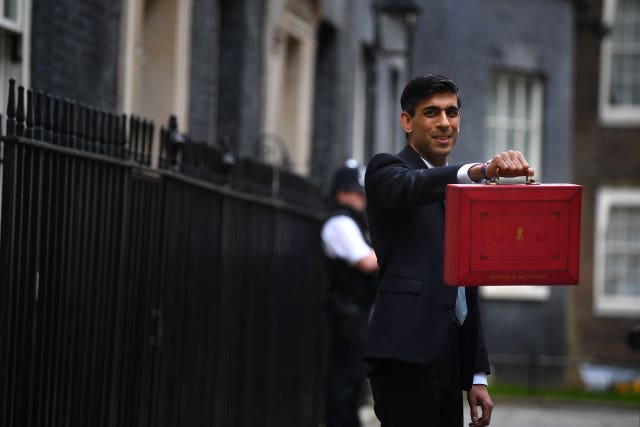£1 billion fund to remove unsafe cladding from high-rise buildings
Rishi Sunak announced the money to scrap all unsafe cladding from residential buildings over 18 metres tall in the Budget on Wednesday.

The Chancellor has announced a £1 billion fund to remove unsafe cladding from high-rise residential buildings, as the Government continues to “grapple” with the “tragic legacy of Grenfell”.
Rishi Sunak announced the money to scrap all combustible cladding materials from all residential buildings over 18 metres tall in the Budget on Wednesday.
The Government had previously committed a total of £600 million to get rid of aluminium composite material (ACM) panels like those used on Grenfell.
This was made up of £400 million for removal of the material from social housing blocks, and an additional £200 million to scrap it from private buildings.
Announcing the policy at the despatch box, Mr Sunak said: “Today, I go further.
“Expert advice is clear, that new public funding must concentrate on removing unsafe materials from high rise residential buildings.
“So today I am creating a new building safety fund worth £1 billion – that is what the experts have called for, that is what the select committee has called for, that is even what the opposition have called for.

“That new fund will go beyond dealing with ACM to make sure that all unsafe combustible cladding will be removed from every private and social residential building above 18 metres high. ”
Mr Sunak also said that the Housing Secretary, Robert Jenrick, will make sure that: “Developers and building owners do their fair share as well.”
The Government will also provide £20 million for fire and rescue services to enable them to increase fire inspection and enforcement capability and to build capacity to respond to the Grenfell Tower Inquiry’s findings.
Last year, the first stage of an inquiry into the Grenfell Tower fire found that the cladding system was the “principal” reason for the flames’ “profoundly shocking” spread up the north Kensington block in June 2017.
Chairman Sir Martin Moore-Bick concluded that fire shot up the building at such speed because of the combustible ACM cladding with polyethylene cores, which acted as a “source of fuel”.
Seventy two people died as a result of the blaze, which was sparked by an electrical fault with a fridge-freezer.
Grenfell survivors called the announcement a “big step” and said the Government is “finally waking up to the severity of the situation”.
Grenfell United, which represents victims and the bereaved, said in a statement: “We hope for the first time in many months people’s anxiety might ease and residents can see an end in sight for the crisis.
“It’s thanks to residents up and down the country, in social and private housing who raised their voices. We stood together and made sure we will not be ignored.”
The group also called for the policy to go further, adding: “This is just the start.
“The fund is for buildings over 18 metres only, not yet for buildings under that.
“Hard work is needed to make sure buildings are prioritised, the funds get out quickly and work starts immediately.”
The fund was also welcomed by the UK Cladding Action Group (UKCAG), who labelled the cladding scandal “a nightmare endured by over half a million British people across the country for far too long”.
Like Grenfell United, it also questioned what the news would mean for buildings under 18 metres tall.
It added: “We look forward to hearing in more detail how this money is to be spent and do hope as stated that it covers all types of cladding and fire safety defects; notably today’s announcement does not address what will now happen for buildings under 18 metres.”





